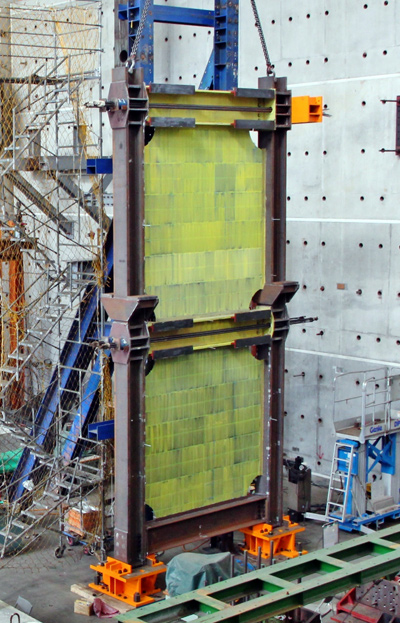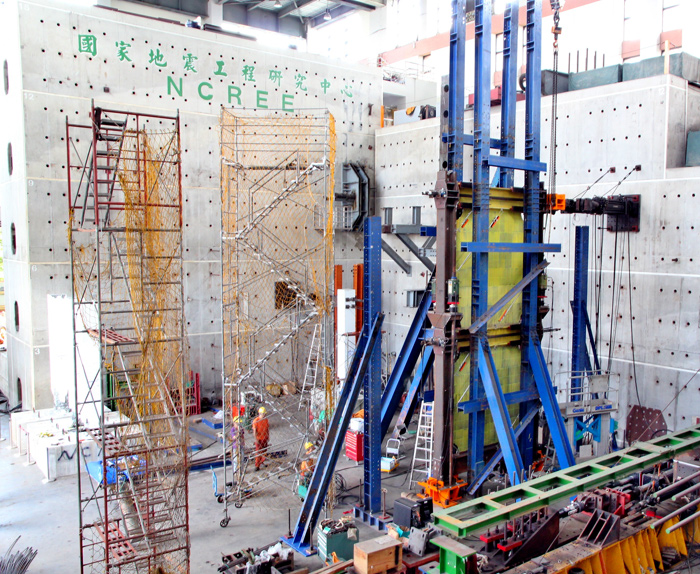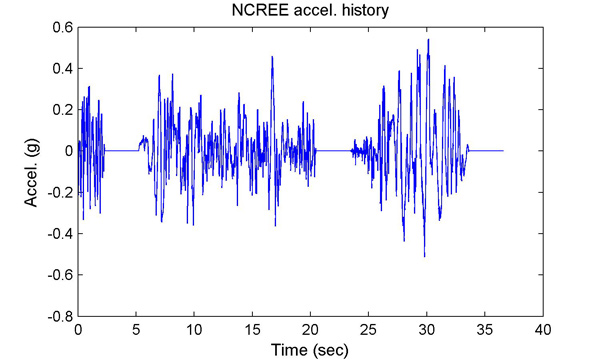
| INTRODUCTION | ||||||||||||||||||||||||||||
The Self-Centering Steel Plate Shear Wall (SC-SPSW) lateral load resisting system has been developed to provide enhanced seismic performance, including system recentering in design-level earthquakes. It is part of a larger project entitled “NEESR-SG: Smart and Resilient Steel Walls for Reducing Earthquake Impacts” funded by the National Science Foundation (NSF) through the Network for Earthquake Engineering Simulation (NEES) program, with steel material provided by the American Institute for Steel Construction (AISC). The overall project aims to develop new, high-performance steel plate shear wall systems and fill critical knowledge gaps in the understanding steel plate shear wall behavior. The NEES Research project is an international collaboration headquartered at the University of Washington (Professor Jeffrey Berman, PI, Professor Laura Lowes, co-PI) with contributions from the University at Buffalo (Professor Michel Bruneau, co-PI), the University of Illinois, Urbana-Champaign (Professor Larry Fahnestock, co-PI), the National Taiwan University (Professor Keh-Chyuan Tsai), and the National Center for Research on Earthquake Engineering (NCREE) in Taiwan. The experimental testing being done at NCREE, under the supervision of Prof. KC Tsai, consists of two full-scale, two-story SC-SPSW specimens. The specimens will each be loaded pseudo-dynamically under three different seismic hazard levels (described below) to assess system performance under different levels of excitation. Both specimens utilize post-tensioned (PT) beam-to-column connections and PT column base connections to provide system recentering, while thin, unstiffened steel infill plates provide the primary lateral strength and energy dissipation of the system. Both specimens employ different PT beam-to-column connection types: 1) a more conventional PT connection where the beam rocks about both of its flanges (Specimen FR) and 2) an innovative PT connection where the beam rocks about its top flange only (Specimen NZ), thus eliminating frame expansion that is typical of conventional PT connections. The experiments have been designed by University of Washington and University at Buffalo Ph.D. students Patricia Clayton and Daniel Dowden with significant contributions from National Taiwan University students (Ching-Yi Tsai) and NCREE staff (Chao-Hsien Li).
|
||||||||||||||||||||||||||||
© 2012 National Center for Research on Earthquake Engineering



